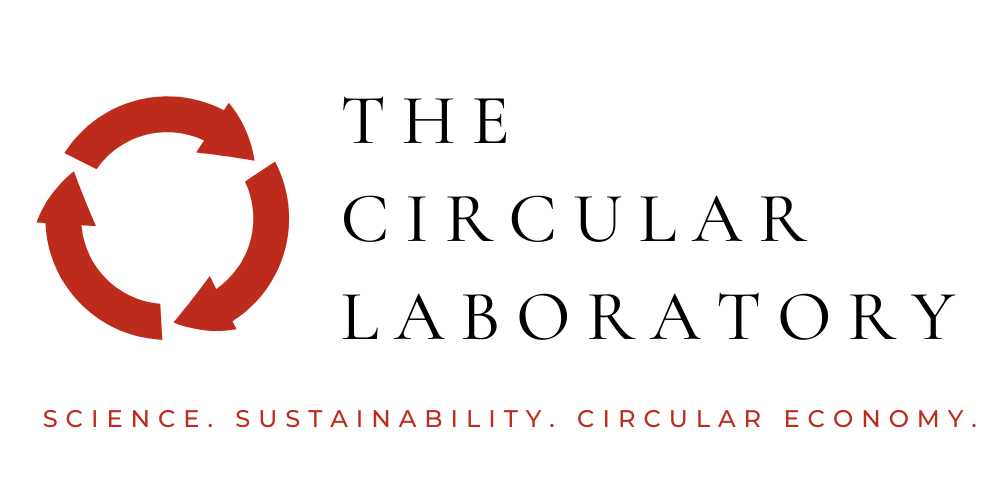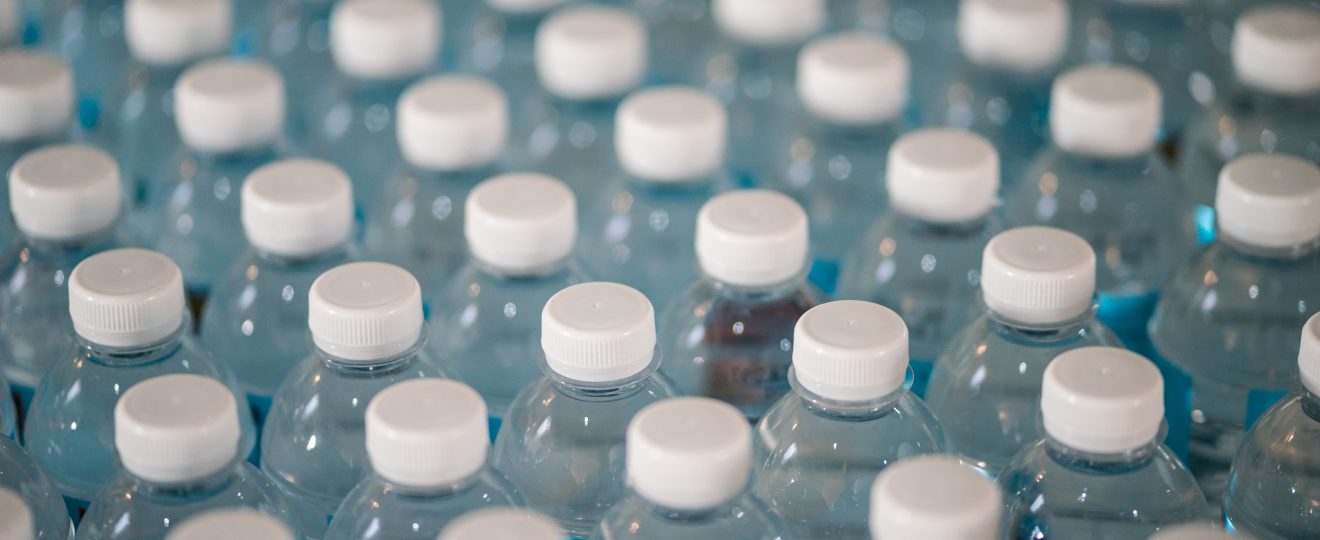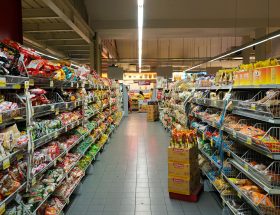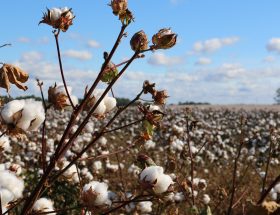By Paula Lorenz
The Thing About Polyester
One thing increasingly noticeable on the internet are ads for sustainable clothing made from recycled polyester. Many brands are now marketing recycled polyester clothes, from small ranges or capsule collections by bigger brands, to niche brands that have made this their USP. To the average, eco-conscious consumer this seems like a very attractive proposal: buy new clothes made from recycled old clothes. At least that is what it may seem like.
The truth is though that recycled polyester is not made from polyester fabric. Instead, most recycled polyester is actually made from single-use plastic bottles. This can be very confusing to consumers, as typically the common understanding of the word ‘polyester’ is ‘a type of fabric‘. So why is the word polyester so ambivalent? It all comes down to the technicality that surrounds the word polyester. This is because scientifically speaking, the word polyester does not describe just one thing: it is actually an umbrella term for a whole group of materials. These materials have in common that they are polymers that contain esters in their building blocks.
So, what does polyester fabric have got to do with PET bottles?
The answer is simple: polyester fabric is made from Polyethylene terephthalate, or PET. It is made from the same material as PET bottles, the most common type of single-use plastic bottles. PET is a kind of polyester and since it is so extensively used in the textile and packaging industries, it is the most common of all the polyesters. (Another, although lesser known polyester for example is PLA, or polylactic acid, a bioplastic, which we have previously covered in another article.)
Why Use Plastic Bottles Instead Of Old Clothes?
This is probably the most obvious question: Why are we using plastic bottles instead of the tonnes of textile waste going to landfill? As much as this is a fair thing to ask it is actually not that simple. But the short answer is: because we can’t do this (yet).
There are plenty of people developing technologies to recycle polyester fabric or textiles in general, like the UK-based company Worn Again, or the US-based companies Ambercycle and Tyton Biosciences (just to name a few). Many of them have already been able to celebrate success at lab stage, but no technology has so far been broadly commercialised. This is because they are simply not scaled-up far enough yet.
The reasons for this are manyfold. For one, polyester is often mixed with other materials, such as cotton or elastane, when producing clothes and with these blends it is difficult to separate the individual materials, as they all have different properties.
Another thing to consider are the ‘impurities’ of textile fibres, most commonly the dyes the fibres are coloured with. These dyes often need to be removed, as having a coloured output limits the applications for the yarn. One can think about it this way: if all kinds of different colours get thrown together, without stripping the dyes the output will likely be a nondescript, brown-ish fibre. This might be able to be turned into a black fibre, by adding black dye, but other than that, the yarn will be highly inflexible colourwise. And that makes it more undesirable for clothing manufacturers to buy (unless they only want to produce black clothes).
But why specifically are PET bottles being used?
This is because PET drinks bottles represent a pure, high-quality form of PET. They are transparent and the majority of them don’t contain any dyes. But more importantly, their material quality is high enough that they can tolerate degradation during the mechanical recycling process. In scientific terms, this is described as them having a high ‘molecular weight’. PET bottles have a high molecular weight, which means despite the stress the material experiences during recycling, such as temperature or moisture, it still comes out in good quality. This makes it versatile for a range of potential applications.
What Are The Implications?
The most striking thing is that, for now, the demand for recycled polyester goes directly hand-in-hand with a dependence on single-use plastic bottles.
This is slightly paradoxical, as the target customers for recycled polyester are eco-conscious consumers willing to pay a premium price for the sustainability factor. Many of these consumers may have a dislike for single-use plastics and try to avoid them in their everyday lives. It’s no surprise that recycled polyester clothes are therefore heavily marketed with sustainability as their USP. Rarely though customers are provided with information on where the recycled polyester comes from. This lack of transparency is often encountered when sustainability is utilised in marketing.
In some instances, the source of the feedstock is a bit clearer. This is mostly the case when companies use marine waste as feedstock for small capsule collections, or some niche brands. Besides this, there are a few examples of transparency though when it comes to PET bottle feedstock. One example is the car manufacturer Audi who uses PET bottles to manufacture seat covers for their Audi A3. In another case, Perpetual, a manufacturer of recycled polyester yarn, specifically encourages brands to communicate the fact that the material is made from bottles on its hang tags.
Overall, verifying the origin of any material means taking on trust and hoping that the information given about a product is what it says it is.
How Sustainable Is This?
Due to the reliance on PET plastic bottles, recycled polyester clothes are not as sustainable as they might appear, despite a better environmental impact. This is because the premise that using recycled polyester from bottles curbs the amount of waste is a bit short-sighted.
It is true that the use of PET bottles as a feedstock for polyester fabrics is a better choice than petroleum, as it provides up to a 75% reduction in greenhouse gas emissions when compared to ‘virgin’ petroleum PET. This significant reduction in greenhouse gas emissions is the main factor for its better environmental impact. Besides this, it might also provide an economic incentive to collect and recycle PET bottles, which is good for the environment.
However, it is important to think about wider and more long-term implications of using only PET bottles as a feedstock for recycled polyester clothes.
Used PET bottles are in high demand due to their mechanical recyclability and feedstock characteristics. In their ‘natural environment’, the drinks industry, they could be recycled many more times within a closed-loop circular economy. This would be more sustainable (by a greater reduction of carbon emissions in the long term) than diverting them into a one-way street application. (Although due to strict quality criteria in the food and drinks industry, recycled PET drinks bottles are often only partially recycled and mixed with virgin material.)
The underlying problem is this: once these PET bottles are taken as feedstock for clothing, they exit a relatively closed-loop (bottles can at least be partially recycled into other bottles) and head into a one-way street, or rather a dead end. This is because the PET is bound in these clothes and cannot be recycled (yet), as there is currently no technology scaled up enough to take these fabrics and return them to virgin quality polyester so they can be used again. So, the value of the material is stuck in the clothing. And once it has reached its end-of-life, it will either be down-cycled or ends up in landfill. None of these options is especially good in terms of sustainability.
Furthermore, taking PET bottles away from the drinks industry triggers a competition for this feedstock between the fashion and drinks industry. And due to legislations changes in places like Europe and a greater focus on recycled content in plastic packaging, the competition for recycled PET is likely to further increase.
Textiles currently make up the largest share of virgin PET production globally. And they also take up the largest share of recycled PET from bottles. Generally, the lack of scaled-up technologies for recycling textiles means that the amount of recycled PET available is much less than the amount of PET that is currently produced from petroleum. This means that the demand for PET cannot be met with recycled bottles alone and as long as that is the case there will be a continuous demand for PET production from petroleum. And this is assuming a perfect collection and recycling rate of plastic bottles, which is unfortunately not the case.
Without the ability to recycle polyester textiles, this situation will always remain, and usage of petroleum to make PET for all products will remain high.
What Needs To Be Done?
Technology Development and Scale-Up
First and foremost, polyester clothes need to become recyclable themselves, so that they can provide their own feedstock for recycled polyester. The goal should be to establish a closed-loop circular economy for textiles. For this to happen, technologies that are in development have to be brought to a point where they are scaled up for commercialisation. Some are still in the laboratory, some at pilot stage, but none have hit the market so far. This is due to the discussed complexity of polyester recycling, as well as funding.
Research and development costs a lot of money, so these research projects need to go through multiple funding rounds to move forward. The more a technology gets scaled up, the more expensive it gets, since (bigger) plants have to be built and more staff need to be brought on board. Generally, there are two paths to approach recycling polyester, one is called depolymerisation and the other is dissolution, i.e. solvent-based technologies. (For those further interested in the science behind this: I have previously made a film about dissolution-based technologies for cotton/cellulose and cotton-polyester-blends, featuring the technologies from Ioncell (Finland) and Worn Again (UK). You can watch it here.)
Brands that use a lot of recycled polyester should consider supporting technology development as part of a wider corporate sustainability strategy.
Traceability And Transparency
One thing that would make a lot of sense is to strive for traceability when it comes to clothes. Where did the material for this piece of clothing come from? What feedstock was used to produce the yarn for this recycled garment? Where were this product and its individual components made?
The concept of traceability is not a new one, it is only increasingly used in non-traditional applications now. In the art world for example, ‘provenance’ has been the be-all and end-all for a long time. This means tracing the origin of the painting all the way back to the painter and linking all ownerships chronologically together in a chain. This principle can similarly be applied to clothes. An important keyword in that respect is blockchain technology. Using blockchain enables the traceability of products by recording all their movements throughout the supply chain on a tamper-proof, digital database. This way, whereabouts and origin of products can be tracked worldwide. Blockchain can therefore also enable greater transparency for consumers – provided a manufacturer wants to share this information.
It’s always possible that fraud could creep into the system somewhere along the line. Even if the digital record is legitimate, the physical product may not be. One approach to prevent this is by adding ‘physical tracers’ to the material. This is something that some manufacturers, such as Unifi, are doing. These tracers enable the fibres to be tested in a laboratory to verify their origin. One way of accomplishing this is by adding a unique DNA additive to the fibre.
And another idea is that of ‘material passports‘, which could potentially interface with a blockchain-based traceability system. Companies such as Circular.Fashion and EON are trying to commercialise systems that can track various attributes of a garment, including its material composition and source. This could be displayed to the consumer through an interface, such as a QR code or RFID tag, and hence providing greater transparency on its origin.
Other initiatives could also help. Firstly, recycled content certifications such as the Global Recycled Standard and the Recycled Claim Standard from Textile Exchange can (in theory) guarantee that the garment is really made from recycled material, by tracking the chain-of-custody along the supply chain. However, this doesn’t typically give the consumer any more detail on its origins, so further information should ideally be provided.
Design for Recycling
Design for recycling is an important factor with respect to circularity. Companies that make sustainability part of their business model need to start with design thinking. Design for recycling is one way to enable circularity. The best way to do this is by limiting the amount of materials used, as this makes recycling easier. An innovative example in that respect was presented by Napapijri in 2019. The brand had designed a 100% recyclable jacket by using a mono-material.
Integrating circularity at the design stage demonstrates an approach that takes the whole life cycle of a textile into account, including the end-of-life of the product. Being mindful that at some point in time a piece of clothing will become waste and preparing for this by decreasing harmfulness and increasing the recyclability potential is a pivotal part of a wholesome sustainability approach.
Conclusion
While recycled polyester made from PET bottles has a lower environmental impact, the wider implications and long-term prospects need to be taken into account. Technologies to recycle polyester clothes are not scaled up enough yet to enable a circular economy for clothes. Hence taking PET bottles from relatively closed loops and using them for textiles trap the material in a one-way street, for now. As long as this is the case, the reliance on petroleum will remain high. The main focus should be on supporting technology scale-up and establishing a circular economy for textiles.








